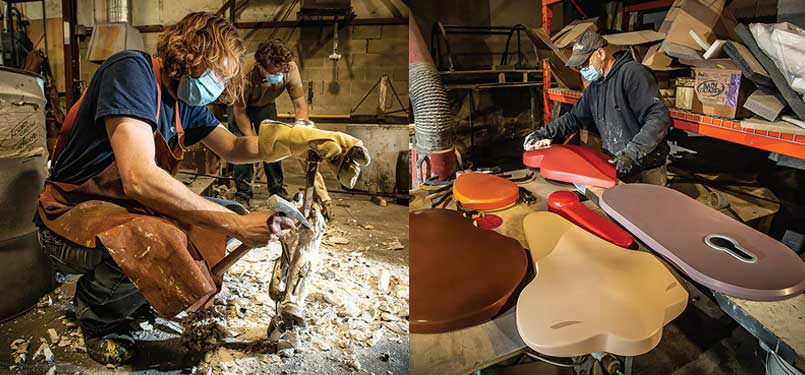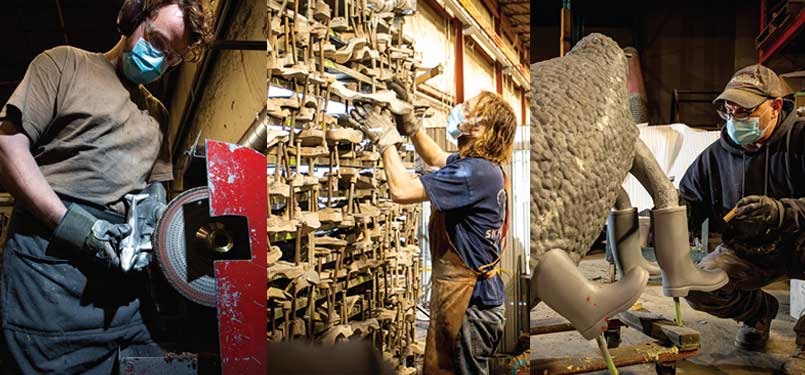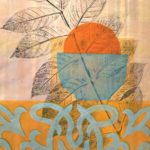

Already renowned for its portfolio of sculptural pieces for museums, Research Casting International is officially turning its attention to local artists with its newly minted division: RCI Studios
I didn’t think anybody would believe me. I almost didn’t believe it myself, but pushing open the door and walking into the cavernous warehouse, I suddenly realized that the rumours were true: the place was filled with the bones of giants and the dust of millennia. And something new I couldn’t quite identify yet.
It took me a moment to come to my senses and remember I was standing in a 48,000-square-foot manufacturing facility in Trenton dedicated to the creation of world-class art pieces, ranging from sculptures of truly behemoth proportions to delicate and intimate works of the most astounding detail.
If you’ve never heard of such a place, that’s because it’s one of the Quinte area’s best kept secrets. Tucked away just off Highway 33, Research Casting International (RCI) is housed in an unassuming industrial building surrounded by a tangle of trees. It’s here that skilled craftspeople have been casting, moulding and assembling eye-popping models and artworks for the past 15 years.
RCI is known internationally for its main business: building and displaying exhibits for museums around the globe. “Everything that we do here is truly art,” says Chris Hogarth, marketing manager for RCI, speaking of the various animal and dinosaur exhibits that have been created by RCI in the past. Taking me on a safari through their kingdom, Chris and RCI’s general manager, Matthew Fair, explain how the company came to be and what their plans for the future are.
Over the background sounds of production, Matthew describes how the company was founded by sculptor Peter May in 1987, when museums began contacting him to create and cast dinosaur specimens. Over the course of several years, the business grew from a moonlighting operation to become a world leader in the industry. In fact, RCI is one of only four companies worldwide that can deliver museum-quality exhibits on such a large scale. And while their focus has been mostly on the scanning, casting and installation of dinosaur exhibits, RCI has done much more over the years: They’ve created entire dioramas for the Shanghai Natural History Museum, depicting the ecosystems of coral reefs that feature sculpted fish and various other specimens; they’ve built life-sized mastodons from bronze for the Indiana State Museum and whales for the Smithsonian; and they’ve worked closely with artist Les Drysdale to make and install the statue of Nikola Tesla that overlooks Niagara Falls. They even created the newest iteration of the enormous goose that perches atop its pedestal in Wawa, Ontario.
A walk through the large, open-plan building stimulates the senses with the sights, sounds and scents of industry. There’s the metallic tang of grinding and cutting and the electric whiff of welding. Jurassic-like machines stretch over the open warehouse space. Dividing the machines are stacks of crates, raw materials of all kinds, and works-in-progress. Employees in protective equipment move soundlessly about their work, while equipment fills the air with the clanking, whirring and feeling of serious creation. I get the impression I’ve stumbled into a strange world where Universal Studios and pop sculptor Jeff Koons have decided to work together on a grand scale.
A NEW ARTISTIC DIRECTION
Now, with a growing portfolio of sculptural pieces, RCI is officially turning its attention to the art world with a newly minted division: RCI Studios.
“What we’re looking at is how can we use the skills, the equipment, all of the stuff that we know how to do and like to do – and that we’re good at – to create other products,” says Matthew.
Currently, the studios are developing a line of small cast-aluminum statues that the company intends to sell through museum gift shops, travelling displays and other retail market channels. The current line of statues features a variety of whale species that were hand sculpted by local artist Robin Ozard, and they are being cast right now in RCI’s facility.
“The idea was to cast them in aluminum, and for that you need a particular type of model,” says Robin. “They wanted a sculpture that was free of overhanging angles yet had to be as scientifically accurate and recognizable as possible. I wanted to breathe movement and fluidity into the finished design.” The statues are beautifully crafted, with incredible attention to form and design. And although they begin life as molten aluminum, the finished products are highly polished art pieces that would be at home in any gallery or collection.
But RCI Studios isn’t just about creating a proprietary line of art pieces.
“What we’re trying to do with RCI Studios is to create a bridge between industrial capabilities and local and international artists and galleries,” says Chris Hogarth. “We want to bring in local artists to work with us on a lot of those projects and to do their projects for them as well – because not everybody has a foundry in their backyard.”
RCI Studios wants to offer their skills, resources and equipment to help artists bring their own visions to life. “We don’t necessarily have the right sculptor on staff, so we would try to find someone local to do that project.”
RCI has been connected to the community for years, and with more and more projects coming their way, RCI Studios will be a boon for local artists. The new division will provide artists with a unique opportunity to work with an internationally recognized company that has contacts in a variety of fields, including museums the world over.
“RCI is a wonderfully exciting company. They care about the craftspeople they work with and the projects they take on,” says Robin Ozard of her experience working with RCI.
Artists can learn more about RCI Studios and the current projects they’re working on by visiting rcistudios.com.
Story by:
Dorian Widling
Photography by:
Mike Gaudaur, Quinte Photo Studio




